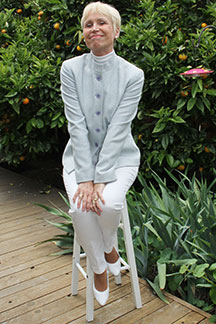During the 13th century, itinerant merchants founded two trading posts, on opposite sites of the Spree River, Coelln and Berlin. Coelln was first cited in a 1237 deed. The date is commonly regarded as the origin of Berlin, although the city is not mentioned until 1244.
The twin settlements were located between the already established towns of Spandau to the northwest and Koepenick to the southeast. Since Coelln and Berlin were on the trading route between Madgeburg and Frankfurt/Oder, they grew quickly. Initially, the Muehlendamm – Mill Dam – that crossed the River Spree served as the only connection between them. Each settlement had its own town hall and mayor. Relations were often tense. When a fire swallowed up a large part of Coelln, the people of Berlin declined to help. But they begged Coelln for assistance only two years later when their own town was burning. An outbreak of the Bubonic plague in Coelln caused Berlin to block the Mill Dam in order to keep the contagions in check. But when a Berlin woman spotted a dead body on the far side of the causeway to Cölln, she climbed over the barriers to steal his jacket. By doing so, she spread the epidemic to Berlin.
In 1307 Coelln and Berlin merged into a single town to improve the inhabitants’ prospects for defending against the sovereign. They constructed a second crossing, the Lange Bruecke – Long Bridge which was later renamed the Rathausbruecke -Town Hall Bridge. It still exists today and is Berlin’s second oldest bridge. A bridge was also constructed to replace the Mill Dam. It was called the Muehlendammbruecke and is now Berlin’s oldest bridge, located between Gertraudenstrasse and Molkenmarkt.
The original two settlements were situated just southwest of today’s Alexanderplatz and the Nikolai section. While Berlin grew into a cosmopolitan city, Coelln became part of its historic core. Its northern peak has become known as Museum Island and its southern part as Fischerinsel – Fishermen’s Island. Coelln’s name survives only in Berlin’s southeastern borough of Neukoelln.
For a sneak peek at the first 20+ pages of my memoir, Walled-In: A West Berlin Girl’s Journey to Freedom, click “Download a free excerpt” on my home page and feel free to follow my blog about anything German: historic and current events, people, places and food.
Walled-In is my story of growing up in Berlin during the Cold War. Juxtaposing the events that engulfed Berlin during the Berlin Blockade, the Berlin Airlift, the Berlin Wall and Kennedy’s Berlin visit with the struggle against my equally insurmountable parental walls, Walled-In is about freedom vs. conformity, conflict vs. harmony, domination vs. submission, loyalty vs. betrayal.


















